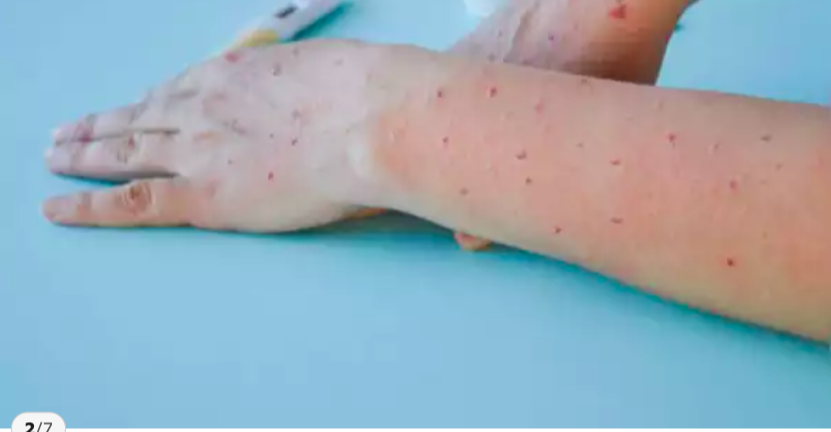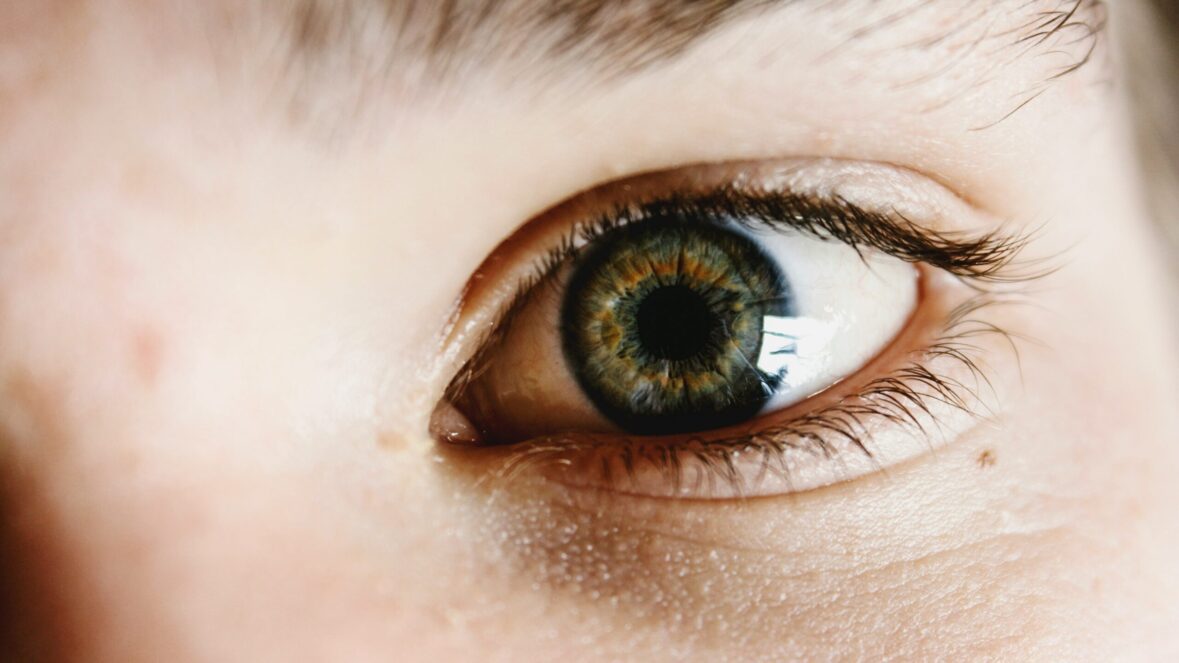Health
A Comprehensive Guide to Managing Glaucoma Effectively

How to Effectively Manage Glaucoma: A Comprehensive Guide
Glaucoma is a common eye condition that affects millions of people worldwide. It is a progressive disease that can lead to irreversible vision loss if left untreated. However, with proper management and early detection, glaucoma can be effectively controlled, allowing individuals to maintain their vision and quality of life. In this article, we will explore the various aspects of glaucoma management, including treatment options, lifestyle modifications, and preventive measures.
The Importance of Early Detection
Early detection is crucial in managing glaucoma. Regular eye exams, especially for individuals over the age of 40 or those with a family history of glaucoma, can help identify the condition in its early stages. During these exams, eye care professionals will measure intraocular pressure, examine the optic nerve, and assess visual field loss. If glaucoma is detected, prompt treatment can be initiated to prevent further damage.
Treatment Options for Glaucoma
Glaucoma treatment aims to reduce intraocular pressure and prevent optic nerve damage. The choice of treatment depends on the type and severity of glaucoma. The following are some common treatment options:
- Medication: Eye drops or oral medications may be prescribed to lower intraocular pressure. These medications work by either reducing the production of fluid in the eye or improving its drainage.
- Laser Therapy: Laser trabeculoplasty and cyclophotocoagulation are two common laser procedures used to treat glaucoma. These procedures help improve the drainage of fluid from the eye, thereby reducing intraocular pressure.
- Surgery: In advanced cases or when other treatments fail to control glaucoma, surgery may be recommended. Trabeculectomy, drainage implants, and minimally invasive glaucoma surgeries (MIGS) are some surgical options available.
Lifestyle Modifications for Glaucoma Management
In addition to medical interventions, certain lifestyle modifications can help manage glaucoma effectively. These include:
- Regular Exercise: Engaging in regular physical activity can improve blood flow to the optic nerve and help regulate intraocular pressure.
- Healthy Diet: Consuming a balanced diet rich in antioxidants, vitamins, and minerals may have a positive impact on eye health. Foods like leafy greens, fish, and citrus fruits are beneficial for individuals with glaucoma.
- Stress Management: Stress can elevate intraocular pressure. Practicing stress-reducing techniques such as meditation, deep breathing exercises, or engaging in hobbies can help manage stress levels.
- Smoking Cessation: Smoking has been linked to an increased risk of developing glaucoma and can worsen the condition. Quitting smoking can significantly improve eye health.
Preventive Measures
While glaucoma cannot always be prevented, certain measures can help reduce the risk or delay its onset. These include:
- Regular Eye Exams: As mentioned earlier, regular eye exams are essential, especially for individuals at higher risk of developing glaucoma.
- Protective Eyewear: When engaging in activities that pose a risk to the eyes, such as sports or working with hazardous materials, wearing protective eyewear can help prevent eye injuries that may lead to glaucoma.
- Healthy Lifestyle: Maintaining a healthy lifestyle, including a balanced diet, regular exercise, and stress management, can contribute to overall eye health.
Conclusion
Glaucoma is a serious eye condition that requires proactive management to preserve vision. Early detection through regular eye exams, along with appropriate treatment and lifestyle modifications, can significantly slow down the progression of glaucoma and prevent vision loss. By taking the necessary steps to manage glaucoma effectively, individuals can maintain their eye health and enjoy a good quality of life.
Frequently Asked Questions (FAQs)
1. Can glaucoma be cured completely?
No, glaucoma cannot be cured completely. However, with proper management and treatment, its progression can be controlled, allowing individuals to maintain their vision and quality of life.
2. Are there any natural remedies for glaucoma?
While certain lifestyle modifications may help manage glaucoma, such as regular exercise and a healthy diet, natural remedies alone cannot replace medical treatment. It is essential to consult with an eye care professional for appropriate management.
3. Is glaucoma hereditary?
Yes, glaucoma can have a genetic component. Individuals with a family history of glaucoma are at a higher risk of developing the condition and should undergo regular eye exams for early detection.
4. Can glaucoma affect people of all ages?
Glaucoma is more common in individuals over the age of 40. However, it can affect people of all ages, including infants and young adults. Regular eye exams are important for early detection, regardless of age.
5. Can I prevent glaucoma by using eye drops?
Eye drops prescribed for glaucoma help manage the condition by reducing intraocular pressure. While they cannot prevent glaucoma, they play a crucial role in controlling its progression.
6. How often should I have my eyes checked for glaucoma?
The frequency of eye exams for glaucoma may vary depending on individual risk factors. Generally, individuals over the age of 40 or those with a family history of glaucoma should have their eyes checked every 1-2 years.
7. Can I drive with glaucoma?
Driving restrictions for individuals with glaucoma may vary depending on the severity of the condition and local regulations. It is important to consult with an eye care professional and abide by the driving laws in your area.
Health
6 Daily Habits to Naturally Lower Cholesterol Levels
Health
Understanding the Rapid Spread of Monkeypox’s New Strain Clade 1b

Understanding the Rapid Spread of Monkeypox’s New Strain Clade 1b: Key Facts on Transmission, Symptoms, Severity, and Vaccination
Monkeypox, a viral disease with symptoms resembling smallpox, has recently gained attention due to the emergence of a newstrain, Clade 1b.
This article delves into the essential details about this new variant, including how it spreads, its symptoms, its severity, and the current state of vaccinations.
Our goal is to provide a comprehensive and clear understanding of this evolving situation, enabling readers to stay informed and prepared.
Monkeypox, once a rare and somewhat obscure disease, has recently become a significant public health concern due to the emergence of new strains.
Among these, Clade 1b has been noted for its rapid spread and distinct characteristics.
As we navigate through the complexities of this variant, it is crucial to grasp the fundamentals of its transmission, symptoms, severity, and preventive measures, including vaccination.
Understanding Monkeypox Clade 1b
What is Monkeypox?
Monkeypox is a zoonotic virus belonging to the Orthopoxvirus genus, which also includes smallpox.
First identified in monkeys, it can infect humans through close contact with infected animals or individuals.
While it shares similarities with smallpox, monkeypox tends to be less severe and less transmissible.
Clade 1b Overview
Monkeypox has several clades (strains), with Clade 1b being the most recent and notable for its rapid spread.
This strain has shown increased transmissibility compared to previous clades, raising concerns among public health officials.
Transmission of Clade 1b
Modes of Transmission
Clade 1b spreads primarily through:
- Direct Contact: Contact with bodily fluids, skin lesions, or contaminated surfaces of an infected person.
- Respiratory Droplets: Prolonged face-to-face interaction can lead to transmission through respiratory droplets.
- Animal Contact: Infected animals, particularly rodents and primates, can transmit the virus to humans.
Environmental Factors
Transmission rates can also be influenced by environmental factors such as:
- Crowded Living Conditions: Higher transmission rates are observed in densely populated areas.
- Sanitation Practices: Poor hygiene and sanitation can facilitate the spread of the virus.
Symptoms of Monkeypox Clade 1b
Early Symptoms
The symptoms of Clade 1b may resemble those of other viral infections, making initial diagnosis challenging.
Early symptoms include:
- Fever: A sudden onset of high temperature.
- Headache: Severe headaches that can persist for days.
- Muscle Aches: Generalized muscle pain and discomfort.
- Fatigue: Extreme tiredness and weakness.
Rash and Skin Lesions
A defining feature of monkeypox is the rash, which typically progresses through several stages:
- Macules: Flat, discolored spots on the skin.
- Papules: Raised bumps.
- Vesicles: Fluid-filled blisters.
- Pustules: Pus-filled lesions that eventually crust over.
Severe Symptoms
In more severe cases, symptoms may include:
- Encephalitis: Inflammation of the brain, leading to neurological symptoms.
- Pneumonia: Infection of the lungs that can cause difficulty breathing.
- Secondary Infections: Bacterial infections that may complicate the healing process.
Severity of Clade 1b
General Outlook
Clade 1b has been associated with a higher transmission rate and more severe outcomes compared to other strains. However, the overall severity can vary widely among individuals.
Factors influencing severity include:
- Immune System Status: Individuals with weakened immune systems or pre-existing conditions may experience more severe symptoms.
- Age: Young children and elderly individuals are at higher risk of severe illness.
- Timeliness of Medical Care: Early medical intervention can significantly affect the outcome.
Mortality Rates
The mortality rate for Clade 1b is currently under study, but initial data suggest it may be higher than previous strains. Prompt medical attention and supportive care are crucial in reducing the risk of severe outcomes.
Vaccination and Prevention
Current Vaccines
Vaccination is a key strategy in controlling the spread of monkeypox.
The following vaccines are relevant:
- Smallpox Vaccine: The smallpox vaccine is effective against monkeypox due to the similarities between the viruses. It provides protection for those who have been recently vaccinated or who received it in the past.
- Monkeypox-Specific Vaccine: Research is ongoing into vaccines specifically targeting monkeypox, with several candidates showing promise in trials.
Vaccination Recommendations
Public health authorities recommend vaccination for:
- Healthcare Workers: Individuals who are at higher risk due to their profession.
- High-Risk Populations: People in areas experiencing outbreaks or those with frequent exposure to infected individuals.
Preventive Measures
In addition to vaccination, preventive measures include:
- Good Hygiene: Regular handwashing and use of hand sanitizers.
- Avoiding Contact: Minimizing close contact with individuals displaying symptoms or with infected animals.
- Isolation: Infected individuals should isolate themselves to prevent the spread of the virus.
Conclusion
The emergence of Monkeypox Clade 1b represents a significant challenge to global health. Its increased transmissibility and potential for severe outcomes highlight the importance of staying informed and proactive.
By understanding its transmission, symptoms, and preventive measures, individuals and communities can better protect themselves and mitigate the impact of this new strain.
FAQs
1. What makes Clade 1b different from other monkeypox strains?
Clade 1b is noted for its increased transmissibility and potentially more severe outcomes compared to other strains.
It spreads faster and may lead to more serious health issues, necessitating closer monitoring and enhanced preventive measures.
2. How can I tell if I have monkeypox or another viral infection?
Monkeypox often begins with flu-like symptoms and progresses to a distinct rash.
If you experience these symptoms, especially if you’ve been in contact with someone who has monkeypox or are in an outbreak area, seek medical advice for accurate diagnosis and testing.
3. Is the smallpox vaccine effective against Monkeypox Clade 1b?
Yes, the smallpox vaccine offers protection against monkeypox, including Clade 1b, due to the similarities between the two viruses.
However, its effectiveness may vary based on factors such as time since vaccination and individual health conditions.
4. Are there any new vaccines specifically for monkeypox?
Research is ongoing to develop and approve vaccines specifically targeting monkeypox.
Several candidates are in various stages of clinical trials, with some showing promising results in enhancing protection against monkeypox strains, including Clade 1b.
5. What should I do if I suspect I have monkeypox?
If you suspect you have monkeypox, contact a healthcare provider immediately. They can guide you through testing, diagnosis, and appropriate care.
In the meantime, practice good hygiene and avoid close contact with others to prevent spreading the virus.
References:
Health
Understanding the Low Risk of Mpox Outbreak in India and Our Preparedness Measures

-

 Trending Stories1 year ago
Trending Stories1 year agoCDC: 1 in 4 Americans Still COVID-Free by End of 2022
-

 Health5 years ago
Health5 years agoMeghan Trainor Shares Motivational New Song ‘Blink’
-

 Health2 years ago
Health2 years agoHow Long Does Monkey Pox Last Before It Surfaces in the Body?
-

 Health2 years ago
Health2 years agoWhat Causes Swollen Body? Understanding Edema and its Triggers
-

 Health4 months ago
Health4 months agoHow Do Pawpaw Seeds Support Cardiovascular Health?
-

 Health3 years ago
Health3 years agoNutrition and the Importance of a Fitness Program – 3 Things to Know
-

 Health3 years ago
Health3 years ago5 Weird Reasons Why Pimples Disappear After Marriage
-

 Health2 years ago
Health2 years agoHealth Benefits Of Pawpaw Seed? 7 Things To Know








